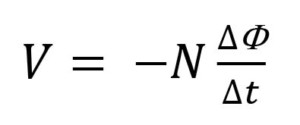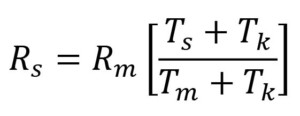DC winding resistance is a simple concept that relies on the fundamental application of Ohm’s Law. It is a powerful tool to determine continuity in power transformer winding circuits, specifically connections and tap changer contacts. However, performing a dc winding resistance test presents several technical difficulties that must be overcome:
- The power transformer’s magnetizing inductance must be removed through saturation of the core steel.
- To accomplish saturation, dc voltage or dc current must be applied or injected, respectively.
- The magnitude of dc signals directly affects the time to saturation. Various techniques such as winding assist can be applied to speed-up and increase the effectiveness of the saturation process.
This article outlines several obstacles associated with performing dc winding resistance tests, offers saturation and demagnetization techniques, and presents safety considerations as well as case studies.
The dc winding resistance test is routinely used in the field to validate and assess the continuity of the current-carrying path between the terminals on a power transformer winding. The test looks for a change in continuity or real losses on this circuit, generally indicated by high or unstable resistance measurements. The dc winding resistance test can identify and diagnose problems such as loose lead connections, broken winding strands, or poor contact integrity in tap changers.
In addition to the winding, several additional components are part of the transformer’s current carrying path:
- Bushings and Bushing Connections
- Draw leads
- Draw lead pins
- Pad connections
- Tap Changers (LTC and DETC)
- Barrier boards
- Selector switches
- Diverter switches
- Reversing switches
- Windings
- Strands
- Cross-overs
- Tap leads
Measurements
The goal is to isolate and measure only the winding resistance of a specific phase and winding. However, depending on the winding configuration — delta (open or closed), wye, auto, or zigzag — and the fact that winding resistance measurement can only be performed between terminals, the measured results may be a combination of windings rather than a specific winding. Delta winding configuration measurements often cause confusion because a single winding cannot be isolated by any terminal pair. In specific applications, such as tertiary or stabilizing windings, the open or closed status of the delta winding creates additional confusion.
The winding resistance measurement circuit includes three components: a dc source (V or I), a voltmeter, and a current meter. Simultaneously measuring voltage and current determines resistance by Ohm’s Law. As simple as the dc winding measurement appears, several factors should be considered.
Measurement Ranges
Understanding expected resistance values is important for setting up and performing a dc winding resistance measurement. The most modern winding resistance instruments can measure very low resistances values in the micro-Ohm (µΩ) range up to notably higher resistance values in the kilo-Ohm (kΩ) range. Typical transformer winding resistances generally range from a few milli-Ohms (mΩ) to several Ohms (Ω).
To determine the expected results, review previous results or consult the factory test report. This allows the optimum ranges on the test instrument to be selected. It is always best to run meters close to full range, above 70 percent if possible. In the case of auto-ranging instrumentation, always verify that an overload condition has not occurred; this could greatly affect accuracy in the reading.
Static and Dynamic Measurement Types
Two distinct types of dc winding resistance measurements can be applied: static (standard) and dynamic (advanced):
- Static. This standard test is performed to measure the actual resistance value of a transformer winding and associated series components. Static measurement produces a single, temperature-dependent value in Ohms.
- Dynamic. Dynamic measurement is typically applied to load-tap changing (LTC) transformers. Dynamic winding resistance measurement tracks the changing resistive behavior as the LTC operates. Knowing that an LTC follows the make-before-break concept, any unusual changes, such as loss of continuity, may indicate premature wear or fault with the LTC, specifically the diverter contacts.
Kelvin Connections
The Kelvin four-wire method is the most effective means to measure very-low resistance values. This method excludes the resistance from the measurement circuit leads and any contact resistance at the lead connection points. The Kelvin four-wire concept is to apply the voltage and current leads separately (Figure 1).

Figure 1: Kelvin Four-Wire Method
Connection points P1 and P2 measure current and current injection; points P3 and P4 isolate the voltage measurement across the test specimen. Another subtle application of the Kelvin four-wire method is to place the voltage-sense leads (P3 and P4) inside the current leads (P1 and P2). This ensures that any undesired voltage drops remain outside the intended resistance measurement.
Saturation
The state of the transformer core’s saturation makes the simple-in-concept test much more troublesome to users. Understanding the transformer core’s influence on the dc winding resistance measurement — as well as why core saturation is a prerequisite for this test — is challenging. To obtain the desired dc winding resistance measurement, the winding’s resistive component must be isolated. The transformer’s magnetic circuit must be saturated. Saturation occurs when all of the magnetic domains are successfully aligned in the same direction.
Using Faraday’s Law shows that the saturation process is dependent on the voltage applied across the terminals of a transformer.

Intuition often leads us to believe it is current. However, higher currents produce greater voltage drops. From an application standpoint, it is important to understand the volt-amperes (V-A) relationship, so that voltage can be maximized.
The transformer winding appears to be a simple resistor–inductor (RL) circuit. The inductive component (L) is made up of the leakage reactance of the winding and the magnetizing reactance of the core. These inductive components must be minimized through saturation. Figure 2 illustrates the RL basic components.

Figure 2: Basic Transformer Impedance Model
These inductances work in conjunction with the dc winding resistance to create a not-so-simple time constant. This time constant could be seconds or it could be minutes.
Recommended Techniques
Using effective techniques and good practices improves the saturation process. If normal current injection methods are not sufficient and effective, additional advanced techniques can aid in saturation. Time to saturation can be shortened by either applying more current, re-directing current flow in Yn (primary) or yn (secondary) windings, or using a combination of high-voltage and low-voltage windings.
- Apply the highest possible terminal voltage without exceeding the recommended winding rating limits. To increase saturation performance, it is important to maximize the terminal voltage. However, there are some limitations. The current through a winding should not exceed 15 percent of the rated current. Limiting the current minimizes the chance of overheating, which could cause a change in resistance or thermal instability.
- Maintain the direction of the magnetic domains between tests. Be aware of the terminal polarity. This may not be optimal when testing a winding.
- Use the high- and low-voltage windings at the same time to assist in saturation; they must be the same phase and direction.
Safety
- Strictly follow all local safety policies and procedures.
- Use caution when applying dc power to test objects with a high inductance; it may result in high voltages.
- As long as energy is flowing in the measurement circuit, never connect or disconnect test objects and/or cables.
- Always swap leads at bushing terminals, never at test equipment.
- Use separate clamps for current and voltage connections on both sides of the test object to avoid hazards in case one clamp falls off during the test.
Magnetization
The saturation process leaves the transformer core in a magnetized state. For most transformer applications, this is considered benign; however, magnetized transformers produce higher inrush currents upon energization. When in doubt, consult the manufacturer.
One side effect of core saturation is that it can influence other diagnostic tests, specifically exciting currents and sweep frequency response analysis (SFRA). At times, TTR has also been affected. Perform dc winding resistance last to avoid contaminating these test results. At the same time, exciting current tests and SFRA tests can be used to confirm and validate the presence or absence of magnetization. Figure 3 illustrates how magnetization can affect exciting currents results. In this example, the expected pattern of two similar highs and one low is slightly distorted. As illustrated in this case, Phase A was most effected by magnetism.

Figure 3: Exciting Current Phase Patterns Before and After Magnetization
Demagnetizing the transformer may sometimes be required. Two techniques can be used:
- Apply decreasing ac voltage. This method is infrequently practiced due to the cost, size, and complexity of such equipment for field use. This method would pull the magnetization curve (Figure 4) to zero (magnetic flux density B and magnetic field intensity H both at a negligible value).

Figure 4: BH Curve
- Apply dc power to the transformer windings and reverse the polarity of the applied source a number of times while reducing the voltage, current, and applied time until the core is demagnetized. Again, the focus is to pull the BH curve to zero.
Analysis of Results
As a diagnostic tool, winding resistance measurement focuses on thermal and mechanical failure modes.
Failure Modes Detected by Winding Resistance
The winding resistance test is very useful in identifying:
- Defective DETC or LTC (contacts)
- Poor connections
- Shorted circuited turns
- Open circuits and turns
Such problems can generate significant heat during normal operation. Review DGA results to confirm that a heating condition exists.
Recommended Limits
Winding resistance test results are interpreted based on comparing individual phase measurements (wye) or terminal measurements (delta). The measurements are expected to be within 2 percent of each other. However, for in-service units or low m-Ohm measurements, agreement to within 5 percent is usually considered satisfactory. Comparisons may also be made with the original factory results or previous test results.
Temperature Correction
When comparing data from different test dates, the results should be normalized to a common reference temperature. The temperature conversion formula is:

where:
Rs = Resistance at desired temperature (Ts)
Rm = Measured resistance
Ts = Desired reference temperature (°C)
Tm = Temperature at which resistance was
measured (°C)
Tk = 234.5°C (copper)
Tk = 225°C (aluminum)
Identify Saturation Integrity
To obtain valid winding resistance measurements, core saturation must occur. The behavior of the measurement is generally inconsistent depending on transformer design and configuration. Delta windings and preventative autotransformers in the LTC circuit are two examples of obstacles that can affect the saturation process. Even after several minutes, saturation may appear complete, but then change again. On difficult units, it is important to document test parameters including approximate saturation time if the unit has been tested before. Experience is often the best option for knowing how to identify saturation.
Once testing is complete, analysis can be enhanced by plotting the data, which in many cases is more helpful than viewing the data in tabular form. Figure 5 illustrates winding resistance data on an LTC that exhibits incomplete saturation. In both examples, early measurements are higher than expected. By viewing the plotted data, it is clear that core saturation has not occurred, and several measurements at the beginning of the test should be considered invalid.

Figure 5: Winding Resistance (mΩ) — Incomplete Saturation
Case Study #1: Overheated Tap Changer Leads
In this case study, the winding resistance measurements produced significantly higher readings on LTC positions 14R and 4L for Phase B (Figure 6). Normal measurements were expected to be in the 25–30 mΩ range. The 14R and 4L measurements clearly exceed the recommended limit of 2 percent.

Figure 6: Winding Resistance Measurements on LTC
At first glance, it appears unusual that separate LTC positions produce questionable results, but review of the LTC nameplate information (Table 1) shows that LTC positions 14R and 4L share a common tap lead (#7).

Table 1: LTC Nameplate
Further investigation showed clear overheating of connection #7 (Figure 7).

Figure 7: Connection #7 Overheating
Case Study #2: Poor LTC Contact
Winding resistance measurements were performed on a load-tap changing transformer with a resistor-type LTC. All odd positions failed. Phase X3-X0 had consistently higher than expected resistance measurements (Figure 8).

Figure 8: Winding Resistance Measurement with Poor Odd Positions on Phase C
When measurements fail consistently in a pattern, in-common components should be investigated. This pattern indicates that the problem is most likely associated with the diverter switch main contacts or associated leads. Figure 9 shows one side of the diverter switch.

Figure 9: Diverter Switch
Conclusion
The dc winding resistance test is a diagnostic tool focused on thermal and mechanical failure modes. The test can identify and diagnose problems in tap changers such as loose lead connections, broken winding strands, and poor contact integrity. Transformer core saturation is a prerequisite for obtaining valid winding resistance measurements, and understanding the influence of the transformer core on the measurement is challenging. Experience best equips a user to successfully identify complete saturation of the transformer’s magnetic circuit and interpret the results correctly.
References
IEEE Std. 62-1995, “Guide for Diagnostic Field Testing of Electrical Apparatus – Part 1: Oil Filled Power Transformers, Regulators, and Reactors.”
P. Gill, Electrical Power Equipment Maintenance and Testing, Second Edition, CRC Press, 2009.
C. L. Sweetser, “The Importance of Advanced Diagnostic Methods for Higher Availability of Power Transformers and Ancillary Components in the Era of Smart Grid.” IEEE Power Engineering Society Summer Meetings, Detroit, USA, July 22-26, 2011
 Charles Sweetser joined OMICRON electronics Corp. USA in 2009 and is presently Technical Services Manager for North America. Prior to joining OMICRON, he worked in the electrical apparatus diagnostic and consulting business. He has published several technical papers for IEEE and other industry forums. As a member of the IEEE Power & Energy Society (PES) for 18 years, he actively participates on the IEEE Transformers Committee and is currently Chair of FRA Working Group PC57.149. He is also a member of several other working groups and subcommittees. Additional interests include condition assessment of power apparatus and partial discharge. Charles earned BS and MS degrees in electrical engineering from the University of Maine.
Charles Sweetser joined OMICRON electronics Corp. USA in 2009 and is presently Technical Services Manager for North America. Prior to joining OMICRON, he worked in the electrical apparatus diagnostic and consulting business. He has published several technical papers for IEEE and other industry forums. As a member of the IEEE Power & Energy Society (PES) for 18 years, he actively participates on the IEEE Transformers Committee and is currently Chair of FRA Working Group PC57.149. He is also a member of several other working groups and subcommittees. Additional interests include condition assessment of power apparatus and partial discharge. Charles earned BS and MS degrees in electrical engineering from the University of Maine.
